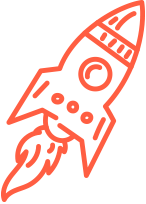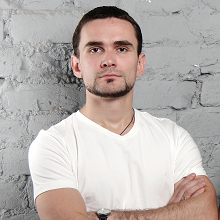
We continue interviewing Russian industrial and product designers who have made themselves known. This time we had a conversation with Michael Belyayev – a multidisciplinary designer whose projects are known all over the world. His shelf called “The Black Square” amazed the community at the 100% Design Exhibition in London.
“3D printing technologies have good future, not to mention good present already” - Catherine Kopytina about her experience with 3D printing in industrial design
About the profession and self-realization
- People call you a multidisciplinary designer as long as you have been studying both industrial and media design. But what kind of designer do you concern yourself?
Perhaps the designer who can design anything – from a pen and furniture to some architectural installations. It can be absolutely anything.
- Are you trying to cover all design spheres?
In some way, I am more inclined to product design. As far as the industrial design has slightly different specificity than the product design. For example, I don’t go in for developing of cases for medical devices because it’s not very interesting for me.
I like creating objects that have clearer image, more distinctive functionality. Not just stylization of industrial objects but something new. That’s why I have broad range of activities.
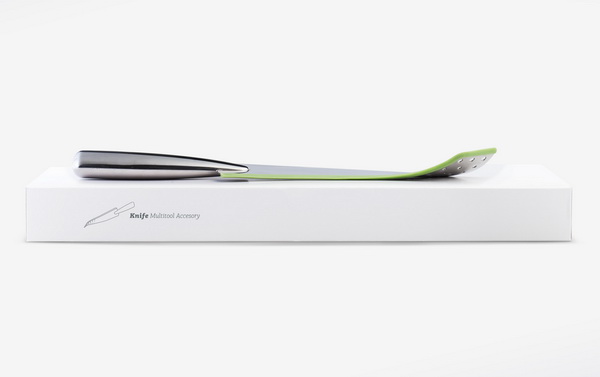
- If you were offered to make a case for some complex device, would you like to take part in such a project?
It depends on what the task is. If it’s required to give a new appearance while saving all the main functions but it’s difficult to introduce something new into an object, then this kind of project is not interesting for me personally. Of course I won’t refuse; I have people in my team who are up for this kind of projects. However, personally I would rather have no a hand in it.
But if you are talking about more or less innovative things, when the decision is development requires complex approach, then why not. I shall make a struggle for it.
- What do you like most of all in your profession?
The diversity. You may learn one thing today, but tomorrow you’ll learn completely different. If you need to design a flash drive, then you should study the market for flash drives. In order to create a social product for a different country, you need to study the country itself, study its culture. For example, in order to design a chair for China, you are studying this market and its peculiarities. Therefore, you are being constantly in the process of studying something new and going deeper into another new field. And this way you have no chance to get bored with your profession. You can do anything you are interested in.
- Why have you decided to get a degree of industrial designer?
Well, it's quite simple, really. I wanted to study arts. I was 17 when time to choose university came. I checked the disciplines they offered. Among them, I found “design” and thought: “If it relates to art, I shall try it”. And then it turned out design was much more interesting than painting, drawing, graphic arts as far as design is more comprehensive discipline which can solve the problems. This is what I like about it.
- Who or what influenced your choice of profession?
Only one book has had an influence on me – “Leonardo da Vinci’s Drawings and Reflections”. I came across it when I was a teenager, I was 14. Thanks to it I started learning to draw. So it got started accordingly. And gradually it flowed from painting and drawing into design.
- How do you think you have reached your professional level: thanks to your education or your personal aspirations?
First of all it is 90% of practice and work. And the last 10%: 5% of which is for education and 5% is for chance.
- Why there’s only 5% for education?
Because education gives us only a basis, especially in Russia. To my mind design education in Russia is in some way detached from reality. Education should go hand by hand with the practice. You won’t become a good designer until you start practicing on your own.
When my friend and I were last-year students, we opened a furniture workshop. As a matter of fact, that was the place where we got the practice. When you’re a student, you don’t think of marketing aspects of any of your projects, of selecting necessary materials and many other things. Many of the nuances are lost.
When you start doing something by yourself, start investing your money, your efforts, your resources, time, then the understanding comes. You start understanding things need to be done in order your product to be sold, in order your product meets the requirements and so as to become or not to become a trend.
I’ve heard much about getting the experience abroad. For example, those who study yacht design in Turin, they start working with the dockyards from the 1st year. I mean from that time you are going deep into this field both in design, production, projecting and marketing point of view. This is the perfect approach. As far as I know, we don’t have such kind of thing yet.
About the peculiarities of industrial design in Russia
- What is industrial and product design for you?
For me it is creating a new product taking into account aesthetic, construction and marketing. The product should have good appearance, has to be usable, practically feasible, well sold, and environmentally friendly.
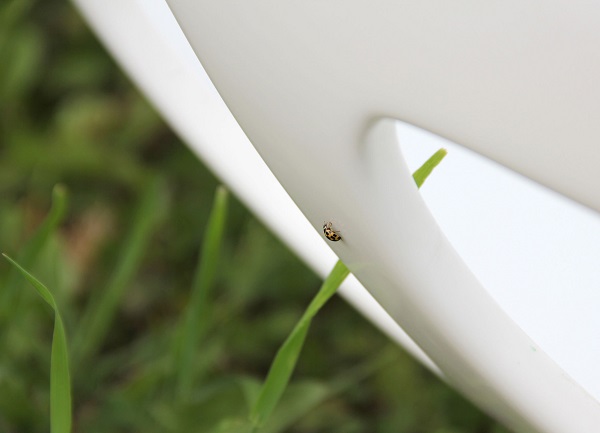
I mean the product itself and its whole life cycle - all this is about industrial design.
Whether it be industrial design or product design, it doesn’t matter, even if it’s creating an art object – the nuances differ everywhere but the main point is still the same.
- In which direction is industrial design developing today?
The new methods and new production technologies are added. 3D printing for instance. Different flows are added right on the phase of prototype creating. Everything is accelerating. The rate of developing new products is increasing. As for the rest, everything remains still, to tell you the truth.
- Does it mean that the developing follows the path of technologies while there are no fundamental changes in views upon the product itself? Are there any trends that are peculiar to the whole world?
The trends are however, temporal features, as far as stylistic directions and their demonstration are cyclic at the present moment. If we take a look at the Apple products, we will see that it is nothing but Dieter Rams with his all sorts of tricks – 1960s, 1970s of the past century. Or let’s take Philippe Starck’s chair "LouisGhost" – it is nothing but the end of the 19th century but just in the context of advanced technologies and requirements of a modern man.
Something is updated but nevertheless becomes apparent over certain period of time. Something from the past arises exactly when a new technology appears. One and the same object could be made in different ways and thus to be renewed.
- What would you like to introduce or observe in industrial design in Russia?
First of all I want it to come to Russia. I want production of consumer goods to appear here. Beside planes and rockets there’re a plenty of things to be made. I think when producers get around to the things like that, something may probably change.
The USA and Europe set their production in China as well as us, but they have experience of insourcing. And now they can afford themselves to produce something in Asia. And we are trying to produce there without having any experience here and as a result we face many problems. I can say it having as an example our workshop. We could sidestep the problem, if only we had got the experience of production here and only then transferred the industrial know-how in Asia.
On the other hand, it’s not a big deal. Each to his own. Italy makes boots. Germany – cars. Britain - corporate design. And we – rockets and planes.
- Would you like our Russian industrial designers to make our country famous and to create and produce goods in our country?
Of course, I would. And we can already observe positive changes in this direction. Because there’re companies which now are engaged in design and production. And this relates not only to furniture – here thing have always been pretty well.
Such companies as Lignt Technologies, Project 111 - those that come to my mind now. The companies that already produce something nowadays in Russia, or in China, or in Europe. Though still 10 years ago it was just barely imaginable.
About additive manufacturing
- Have you ever used additive manufacturing in your projects? And if you have, then what for?
Certainly. We have a small 3D printer in our workshop which constantly prints something. Almost every object which we create is examined for its ergonomics, functionality, volume, some sort of perception. So we are printing, testing, examining.
- If you have a possibility now to turn back to the past and apply 3D printing technologies to any of your completed projects, what and how would you do?
It’s hard to say because some of the projects just need to be made in material for examining and some of them are clear enough for launching into production according to plans right away.
- What, In your point of view, should be further developed in 3D printing for this technology to become an inherent part of industrial design projects?
Here probably not the technology should be developed. 3D printing is developed well enough as a technology today. It depends mostly on the project and design studio which can afford 3D printing itself. Maybe it’s because of the cost or lack of awareness that this or that designer is able to make a 3D model.
- What would you like to try in 3D printing? Which of the present technologies do attract your attention?
We print for example with ABS and PLA plastics. As a matter of fact, they meet our requirements together with afterwork. Metal is interesting as well.
About firsthand experience
- What inspires you in you work?
I always answer that the problems and tasks, which I supposed to solve do inspire me. When you get a task, see it and feel it, then your brain start working by 110%.
You are delving into the subject and keep working until you find at least one possible solution. I mean I draw inspiration from great challenges.
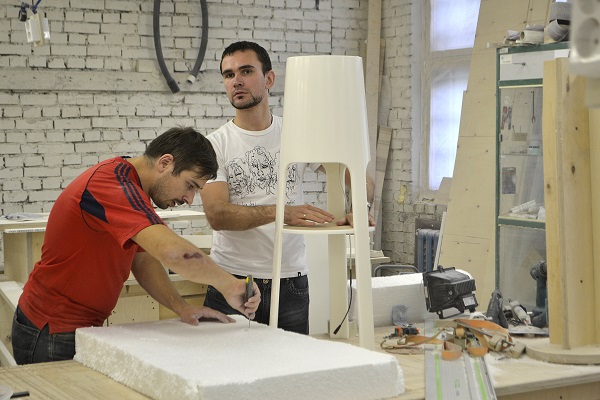
- By invitation from CIBART (Centre for Indian Bamboo Resource and Technology) you had a chance to participate in the social project in India. You have created a unique modular umbrella called Umboo, which can be used if required while arranging markets, schools and bus stops. What did the experience in such a project give you?
This project gave me a great experience of international collaboration in the sphere of not modern and expensive projects after which official opening or presentation follows.
This is absolutely different format of projection and relationships with people.
When you are immersed in a completely different culture, different civilization, and somehow participate in their local problems which are global in fact for the whole region. And there’re a lot of such regions and such countries. And there’re many problems like this.
After the trip I’ve got an opportunity and a desire to continue this practice but to try something like that in other countries. Also this experience showed me that the world is so big and different in terms of design. You can create the most incredible things.
- What do you have in plans for the nearest future?
We still continue our cooperation with Project 111 while creating and projecting design gifts for a new international brand F.O.R. Over just one year the brand was exhibited in Moscow, London, Milan, Hong Kong, and Dusseldorf.
Of course, our next step will be social projects. Now we carry on negotiations with a range of organizations, meanwhile no concrete details.
- What should be a modern industrial designer like? Please give a piece of advice to the new generation of industrial designers.
One should be persistent and hardworking, should gain an understanding of the technologies and never stop. Love your work, just breathe with it.
Author: Darya Kazovskaya
Mikhail Belyaev website: mikhailbelyaev.com
How we awarded the winners of nomination «Prototyping»: the results of student contest
